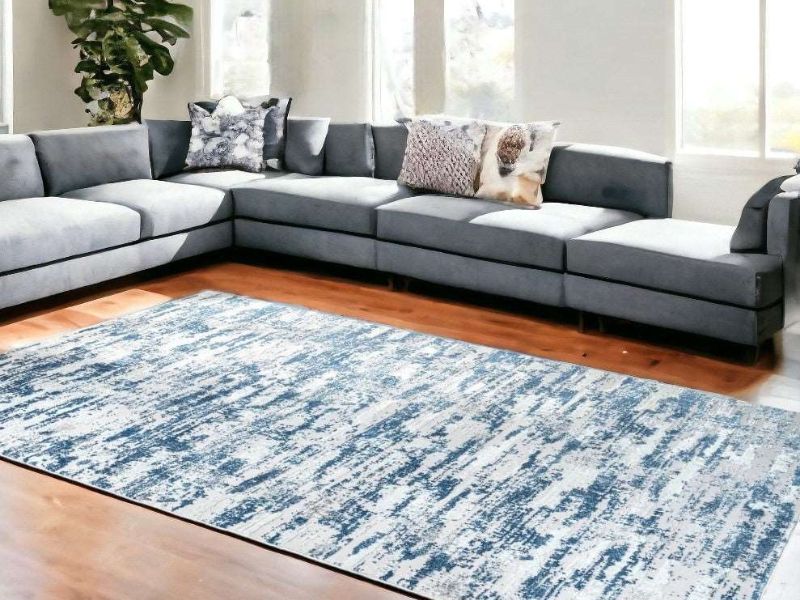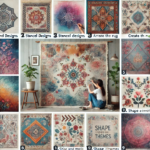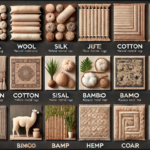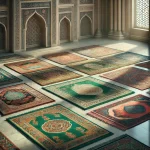Woven area rugs are not just practical floor coverings; they are timeless pieces of art that can transform any room into a warm and inviting space. From their intricate designs and durable construction to their versatility in home décor, woven area rugs are an essential element for anyone looking to add texture, color, and style to their living space.
This comprehensive guide will explore everything you need to know about woven area rugs, including the craftsmanship behind them, the variety of styles available, and how to choose and care for the perfect rug for your home.
Understanding Woven Area Rugs: A Rich Tradition of Craftsmanship
Woven area rugs are created through the interlacing of warp (vertical) and weft (horizontal) threads, a technique that has been used for centuries across various cultures. The craftsmanship involved in creating these rugs varies depending on the materials, techniques, and designs, but all woven rugs share a commitment to quality and durability.
Handwoven vs. Machine-Woven Rugs:
- Handwoven Rugs: These rugs are crafted by skilled artisans who weave the threads by hand on a loom. The process is time-consuming and requires a high level of expertise, but the result is a rug with intricate designs and a unique, personal touch. Handwoven rugs are often more expensive due to the labor involved, but they are also highly valued for their craftsmanship and longevity.
- Machine-Woven Rugs: Machine-woven rugs are produced using automated looms, which allow for quicker production and more consistent designs. While they may lack the handmade charm of handwoven rugs, machine-woven rugs are often more affordable and come in a wide range of patterns and colors.
Materials Used in Woven Rugs:
- Natural Fibers: Woven rugs are commonly made from natural fibers such as wool, cotton, jute, and silk. Wool is particularly prized for its softness, durability, and natural stain resistance, making it a popular choice for high-quality woven rugs. Cotton and jute are more affordable options that offer a casual, earthy look, while silk adds a luxurious sheen and fine detail to the rug’s design.
- Synthetic Fibers: Synthetic materials like nylon, polyester, and polypropylene are also used in woven rugs, offering durability and resistance to stains and fading. These rugs are often more budget-friendly and are available in a wide range of styles and colors.
Weaving Techniques:
- Flat Weave: In flat-woven rugs, the threads are tightly interlaced to create a flat surface without any pile. These rugs are lightweight, reversible, and ideal for high-traffic areas. Kilims and dhurries are popular examples of flat-woven rugs.
- Pile Weave: Pile-woven rugs have a raised surface created by cutting the loops of yarn that form the pile. This gives the rug a plush, soft texture, making it comfortable underfoot. Persian and Oriental rugs are classic examples of pile-woven rugs.
- Tapestry Weave: Tapestry-woven rugs involve weaving intricate patterns directly into the fabric, resulting in detailed and vibrant designs. These rugs are often used as decorative wall hangings or focal points in a room.
Styles of Woven Area Rugs: Finding the Perfect Match for Your Home
Woven area rugs come in a wide variety of styles, each with its own unique characteristics and appeal. Whether you’re looking for a traditional piece with historical significance or a contemporary rug with a modern twist, there’s a woven rug to suit every taste and décor.
Traditional Rugs:
- Persian Rugs: Known for their intricate patterns and rich colors, Persian rugs are handwoven masterpieces that have been prized for centuries. They often feature floral or geometric motifs and are made from high-quality wool or silk. Persian rugs add elegance and sophistication to any room.
- Oriental Rugs: Oriental rugs encompass a wide range of styles, including Turkish, Chinese, and Indian designs. Like Persian rugs, they are handwoven and known for their detailed patterns and vibrant colors. Oriental rugs are often passed down as heirlooms due to their enduring beauty and craftsmanship.
- Kilim Rugs: Kilims are flat-woven rugs that originated in the Middle East and Central Asia. They are characterized by their bold geometric patterns and bright colors, making them a striking addition to any room. Kilims are versatile and can be used as floor coverings, wall hangings, or even draped over furniture.
Contemporary Rugs:
- Abstract and Geometric Patterns: Modern woven rugs often feature abstract or geometric designs, using bold shapes and lines to create a contemporary look. These rugs can add a touch of modern art to your home, making them perfect for minimalist or industrial-style interiors.
- Monochrome and Neutral Tones: For a more understated look, contemporary woven rugs in monochrome or neutral tones offer subtle elegance. These rugs are versatile and can blend seamlessly into a variety of décor styles, providing a soft, calming backdrop to your space.
- Textured and Shag Rugs: Textured woven rugs, including shag rugs, offer a cozy, tactile experience. These rugs are made with longer fibers or multiple layers of material to create a plush surface that’s perfect for lounging. They work well in casual, comfortable spaces like living rooms or bedrooms.
Bohemian and Eclectic Rugs:
- Boho Chic: Bohemian-style woven rugs are all about color, pattern, and texture. They often mix and match various design elements, including tribal motifs, floral patterns, and vibrant hues, to create a laid-back, eclectic look. Boho rugs are perfect for those who love a relaxed, artistic vibe.
- Vintage and Distressed Rugs: Vintage-inspired woven rugs often feature faded colors and worn patterns that evoke a sense of history and nostalgia. These rugs add character and a lived-in feel to your home, making them ideal for creating a cozy, welcoming atmosphere.
Choosing the Right Woven Area Rug for Your Space
Selecting the perfect woven area rug involves more than just picking a design you like. Consideration of the rug’s size, placement, and functionality is crucial to ensure it enhances your space while meeting your practical needs.
Size and Placement:
- Room Size: The size of your rug should be proportionate to the size of the room. In a living room, a large rug that extends beyond the furniture helps anchor the space, while a smaller rug can define a specific area, such as a seating nook.
- Furniture Layout: Consider the placement of your furniture when choosing a rug size. In a dining room, the rug should be large enough to accommodate the table and chairs, even when the chairs are pulled out. In a bedroom, a rug that extends beyond the sides and foot of the bed creates a cozy, unified look.
- Rug Shape: While rectangular rugs are the most common, don’t be afraid to explore other shapes, such as round or oval rugs, which can add visual interest and soften the lines of a room.
Functionality and Durability:
- Traffic Patterns: For high-traffic areas like hallways, entryways, or kitchens, choose a woven rug made from durable materials like wool or synthetic fibers. Flat-woven rugs are also a good choice for these spaces due to their resilience and ease of cleaning.
- Comfort: In spaces where comfort is key, such as living rooms or bedrooms, consider a plush pile-woven rug that offers a soft, cushioned feel underfoot. Wool and cotton are excellent choices for their natural warmth and softness.
- Maintenance: Consider the maintenance requirements of the rug. Natural fiber rugs may require more care to keep them looking their best, while synthetic rugs are often easier to clean and more resistant to stains.
Color and Pattern:
- Harmonizing with Décor: When choosing a rug, consider the existing color palette and style of your room. A rug can either complement the décor by matching the colors and patterns or serve as a focal point with a contrasting design.
- Light vs. Dark: Lighter-colored rugs can make a room feel larger and brighter, while darker rugs add depth and warmth. However, light rugs may show dirt more easily, so consider the practicalities of your space when making your choice.
Caring for Your Woven Area Rug
Proper care is essential to maintain the beauty and longevity of your woven area rug. With the right maintenance routine, your rug can remain a cherished part of your home for many years.
Regular Cleaning:
- Vacuuming: Regular vacuuming is crucial to prevent dirt and debris from settling into the fibers of the rug. Use a vacuum with adjustable settings to avoid damaging the rug, especially if it has a high pile.
- Spot Cleaning: In case of spills, blot the area immediately with a clean, dry cloth to absorb the liquid. Avoid rubbing, as this can push the stain deeper into the fibers. Use a mild detergent and water for spot cleaning, and always test on a small, inconspicuous area first.
Professional Cleaning:
- Deep Cleaning: Depending on the material and usage, your woven area rug may benefit from professional cleaning every 12 to 18 months. This will help remove deep-seated dirt and restore the rug’s vibrant colors and texture.
- Specialty Rugs: For delicate or vintage woven rugs, seek out a professional cleaner who specializes in handling fine textiles. These rugs require special care to preserve their intricate designs and materials.
Protection and Preservation:
- Rug Pad: A rug pad provides additional cushioning, prevents slipping, and protects the rug’s underside






